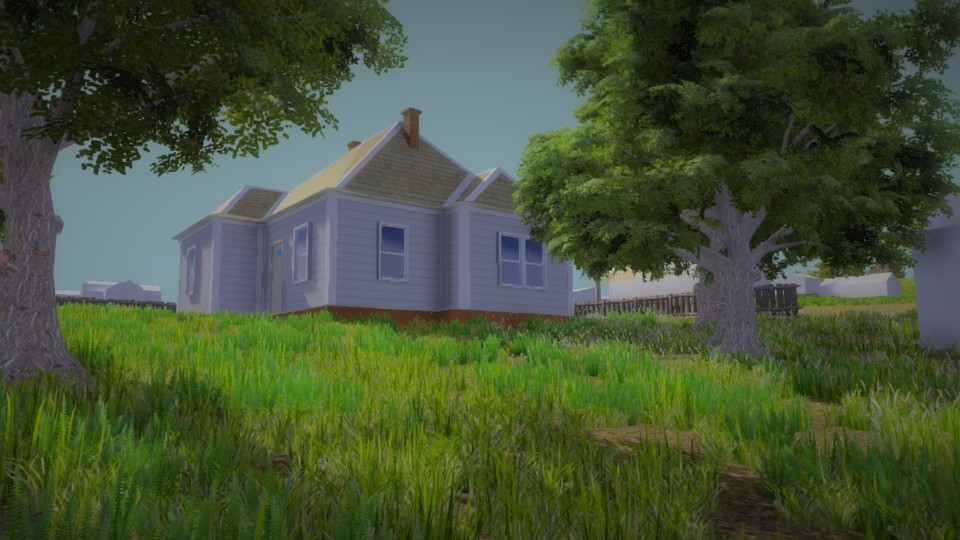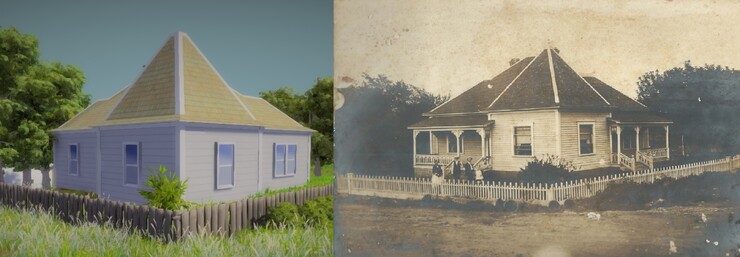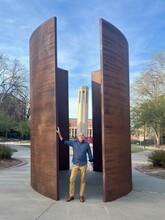· 5 min read
Huskers help communities build virtual reality projects

Virtual reality is a popular and burgeoning tool to bring awareness of and accessibility to historical sites. Large, multi-institutional projects have brought ancient Mayan cities, the Pyramids and even shipwrecks back into view.
It may seem far-fetched and out of reach for smaller, more localized heritage sites to use these tools, but a group of Husker researchers laid some of the groundwork to help communities bring history back to life.
The team — comprised of Matt Douglass, Jeremy Brunette and Zach Day — used archaeological data from Sulphur, Oklahoma, and Cheyenne County, Nebraska, and utilized geographic information systems and open source video game software to build virtual reconstructions of a deserted town and the Battle of Mud Springs.
The methodology and video tutorials showing how the team put the recreations together are now housed on the University of Nebraska-Lincoln’s Center for Great Plains Studies website, and freely available to all. The work was also published in Advances of Archaeological Practice.
“We wanted to address this dilemma of increasing public access,” said Matt Douglass, assistant professor of practice. “There are all these big virtual reality projects — the Pyramids, Colonial Williamsburg — but there are also a lot of heritage sites all around us that are not available to the public.”
Douglass and former graduate students Brunette and Day developed the methodology with an eye on keeping it low-cost and accessible.
“Theoretically, as long as people have a basic knowledge of GIS software, it’s relatively easy,” said Day, who served as technical lead on the project and graduated in May 2016 with his master’s degree. “That was the goal. You need very little technical knowledge. It doesn’t require code.”
The idea was planted when Brunette chose the Sulphur, Oklahoma, project for his master’s thesis as part of a project sponsored by the Great Plains Cooperative Ecosystems Studies Unit. He was tasked by the National Park Service to locate, document and map buildings that had once existed as the town of Sulphur Springs in the late 1800s. The town had to be moved twice because the land belonged to the Chickasaw, and eventually became a national park.
Brunette was doing the archaeological work for the National Park Service, but members of the community very much wanted the research made publicly available.
“The people who still lived in the town were very interested in their history,” said Brunette, who earned his master’s degree in 2015. “We had all these great data, but we couldn’t share them because we have archaeological sensitivities. We were worried about artifact collectors in the park. We wanted to figure out how we could safely share these data.”
Douglass said the team didn’t have previous experience in the area of virtual reality when they started talking about doing reconstructions, but were able to train themselves by piecing together parts from online tutorials offered by GIS, video game production, and software enthusiasts.
“We started with a very basic idea of what we wanted to accomplish and through the work of creative students and help from online communities of practice, we were able to solve problems that took us from this basic concept to a fully immersible reconstruction using freely available video game software,” Douglass said. “That experience of collaborative learning and really ‘tinkering’ made us think about documenting a workflow that others could use for these smaller, ephemeral sites.
“We thought, ‘if we can do it, other people might be able to do it’ and if it is freely available and the technology is open source, let everyone have access to our approach.”
For the reconstruction of Sulphur Springs, Douglass had undergraduates help design the houses in SketchUp, which demonstrated the workflow could be incorporated into curriculum as well.
After the success of the Sulphur project, the team worked with Peter Bleed, emeritus professor in anthropology, to do a recreation of the Battle of Mud Springs and test the workflow on a different kind of archaeological project. The recreation was successful, and it illustrated how virtual reality can aid archaeologists and anthropologists.
“These virtual reconstructions are a great tool for the public, but it also allowed us to think about some things that we just wouldn’t have before. It adds new depth to the questions we can ask and we can come up with hypotheses,” Douglass said.
Douglass is pursuing additional funding to reproduce the tutorials and add additional information and to develop learning modules that could be used in middle and secondary school settings.








